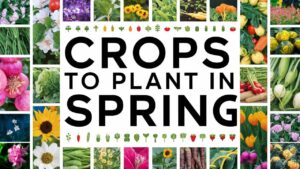In this post, we will explore an array of annual flowers suitable for the UK climate, detailing their characteristics, care, and ideal growing conditions.
Sweet Pea
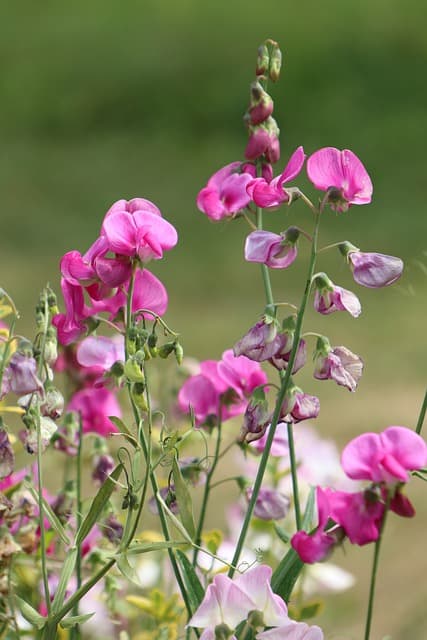
The sweet pea (Lathyrus odoratus) is a delightful and fragrant annual flower, popular in gardens across the UK. Known for its climbing habit, it can reach heights of up to six feet, making it perfect for trellises or fences. Sweet peas showcase an array of pastel colors, including pinks, purples, and whites, often with lovely ruffled petals.
Plant your sweet peas in rich, well-draining soil and provide them with a sturdy support structure. These flowers prefer full sun but can tolerate partial shade, especially in hot weather. Regular watering is crucial; however, avoid waterlogging. As a bonus, sweet peas are fantastic for attracting bees and other pollinators to your garden, contributing to a healthy ecosystem.
Sweet Alyssum

Their tiny flowers and delightful fragrance make sweet alyssum (Lobularia maritima) a charming addition to any garden bed or container. These low-growing plants, typically no taller than twelve inches, bloom in clusters of white, lavender, or yellow, creating a lush carpet of color.
Sweet alyssum is exceptionally easy to grow and can flourish in various soil types. They thrive in full sun but also tolerate partial shade, making them versatile. Ensure the soil is well-draining to prevent root rot, and regularly deadhead the spent flowers to encourage more blooms. Their nectar-rich flowers make sweet alyssum a magnet for beneficial pollinators, enhancing your garden’s biodiversity.
Ammi

Ammi majus, also known as bishop’s weed or laceflower, adds an air of elegance to any garden. With its delicate, lacy clusters of tiny white flowers atop tall, slender stems, ammi lends a soft touch to borders and arrangements. These flowers can grow up to three feet tall, making them ideal for the back of a border or as a statement plant in your garden design.
Plant ammi in full sun or light shade, ensuring the soil is well-draining. They prefer fertile, moisture-retentive soil to showcase their best blooms. Ammi is also drought-tolerant once established, making it a low-maintenance option for busy gardeners. Its subtle charm suits both contemporary and cottage-style gardens, blending beautifully with other flowering plants.
Gerbera Daisy
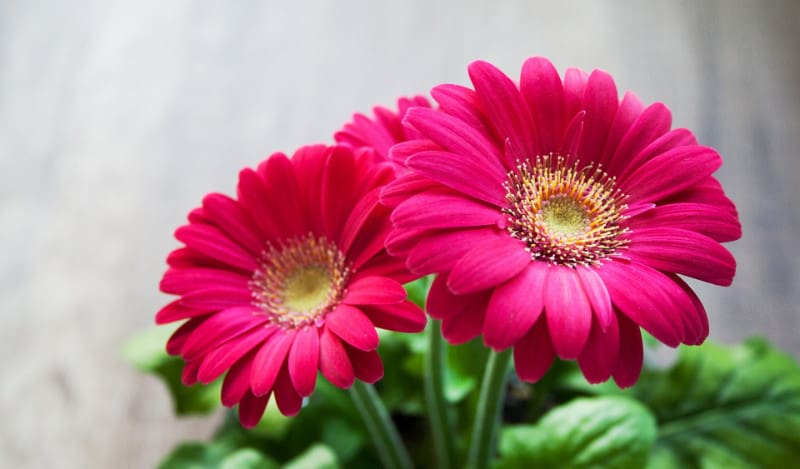
Gerbera daisies (Gerbera jamesonii) are truly eye-catching with their bold colors and large blooms, which can reach up to four inches in diameter. Available in hues of red, orange, pink, and yellow, these flowers are perfect for brightening up any space, whether in borders or containers.
These flowers thrive in full sun and well-drained soil, with a slightly acidic pH. They appreciate regular watering, especially during dry spells, but be cautious of overwatering. Gerbera daisies are ideal for sunny patios or as cut flowers in arrangements due to their long stems. Incorporating these vibrant blooms can add personality and joy to your outdoor decor.
Nasturtium
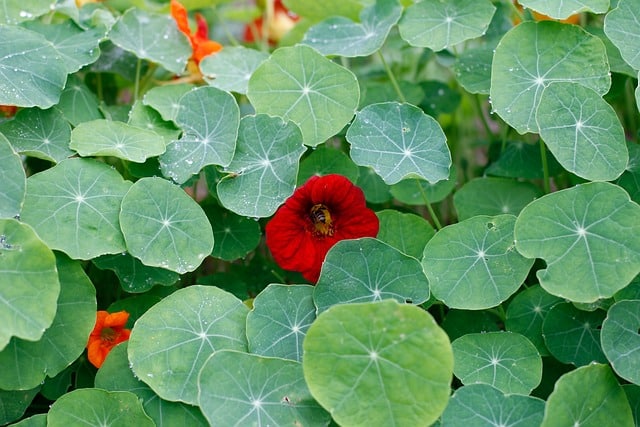
Nasturtiums (Tropaeolum majus) are both colorful and versatile. With distinct round leaves and vibrant flowers in colors ranging from yellow to deep red, they can cascade beautifully from hanging baskets or add a burst of color to garden beds. Nasturtiums are not only ornamental but also edible; their peppery leaves and flowers can enhance salads and dishes.
These hardy plants thrive in full sun and well-draining soil. They do best in poor soils, as overly rich conditions can lead to lush foliage at the expense of flowers. Nasturtiums are drought-tolerant, making them perfect for low-maintenance gardens. As an added benefit, they attract numerous beneficial insects while deterring unwanted pests, making them a great companion plant.
Nigella
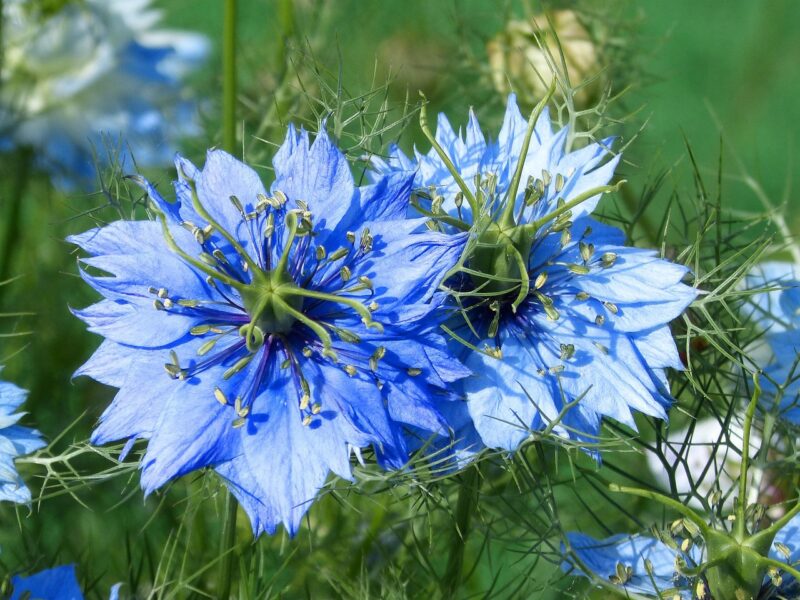
Nigella, commonly known as love-in-a-mist, is a unique and whimsical flower that captures the imagination with its finely cut foliage and unique seed pods. The flowers, which bloom in shades of blue, white, and pink, are encased in a cloud of feathery leaves, creating a lovely misty effect.
Nigella thrives in well-draining soil and prefers full sun to partial shade. This hardy annual can tolerate poorer soils, making it an excellent choice for wildflower gardens or more naturalistic settings. Once established, nigella requires minimal care and attracts a variety of pollinators. After blooming, leave the seed heads intact for an enchanting late summer display and a source of seeds for next season!
Cornflower
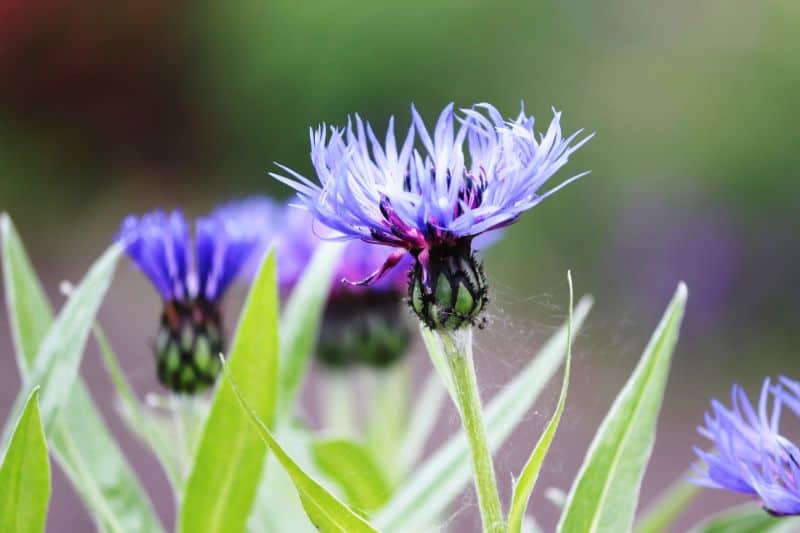
The cornflower (Centaurea cyanus), also known as bachelor’s button, is a classic annual flower with a striking blue color that is a must-have for any garden. Cornflowers are easy to grow, making them popular among novice and experienced gardeners alike. They have a charming, wildflower look, making them perfect for adding a touch of informality to garden beds or cottage gardens.
Cornflowers thrive in full sun and prefer well-draining soil. This hardy plant is drought-tolerant and can thrive in poorer soil conditions. By deadheading regularly, you can encourage continuous blooming throughout the summer, while their ability to attract pollinators adds to their appeal. Cornflowers also make delightful cut flowers and are perfect for wildflower arrangements.
Poppy
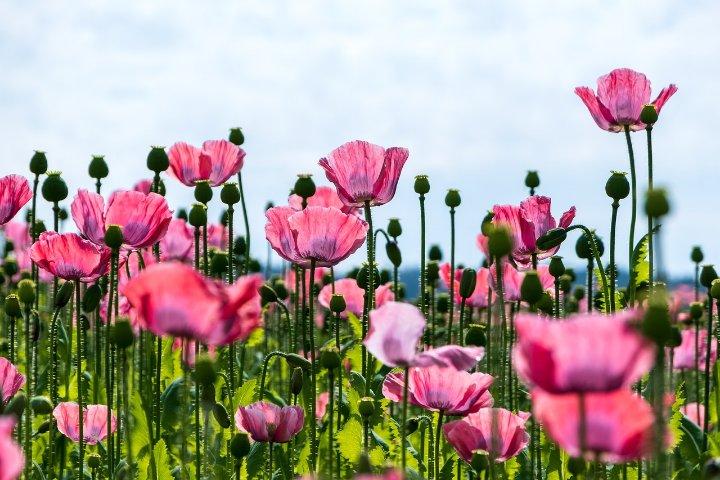
Poppies (Papaver) are iconic annual flowers cherished for their vibrant colors and delicate petals. They bloom in various shades, including red, orange, and white, and their striking blooms can transform any garden into a stunning sight. While the common field poppy (Papaver rhoeas) is a familiar sight in the UK, many other varieties also deserve attention.
Poppies are best planted in well-draining soil and thrive in full sun. They are drought-tolerant and prefer poorer soils, making them low-maintenance and resilient. Their unique seed heads are beautiful in late summer and fall and can be collected for replanting in the following years. Poppies are a symbol of remembrance and a wonderful addition to any garden, bringing beauty and history together.
Zinnia
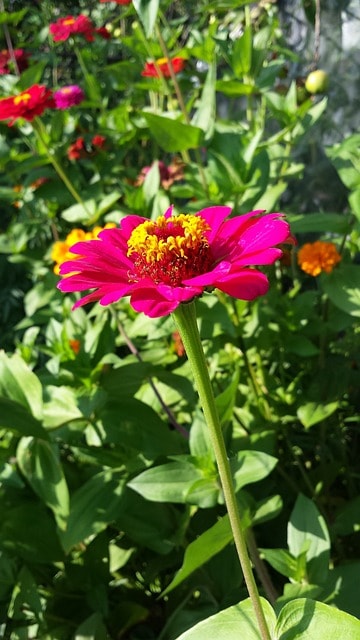
Zinnias are a colorful annual flower that thrives in warm weather, producing abundant blooms throughout the summer. Available in various colors, including pink, orange, yellow, and red, zinnias are particularly attractive to butterflies and pollinators, making them perfect for wildlife gardens.
Zinnias are relatively easy to grow, preferring full sun and well-drained soil. They are tolerant of heat and drought, making them ideal for the UK’s warmer summer days. By regularly deadheading the spent blooms, you can encourage more flowers to develop. Their upright habits make zinnias suitable for borders, containers, or as cut flowers for wonderful arrangements.
Petunia
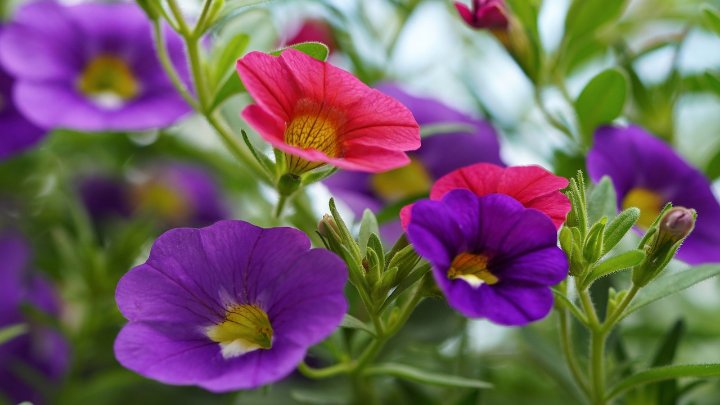
Petunias are one of the most popular annual flowers, renowned for their long-lasting blooms and versatility. They come in myriad colors and patterns, making them suitable for various garden themes. Whether trailing or upright, petunias can enhance hanging baskets, window boxes, or garden borders.
These flowers prefer full sun and well-drained soil enriched with organic matter. Regular watering is essential, especially during dry spells, but be cautious of waterlogged soil. Petunias can benefit from regular fertilization to promote more blooms. With their stunning hues and fragrances, petunias add joyful exuberance to any floral display.
Begonia
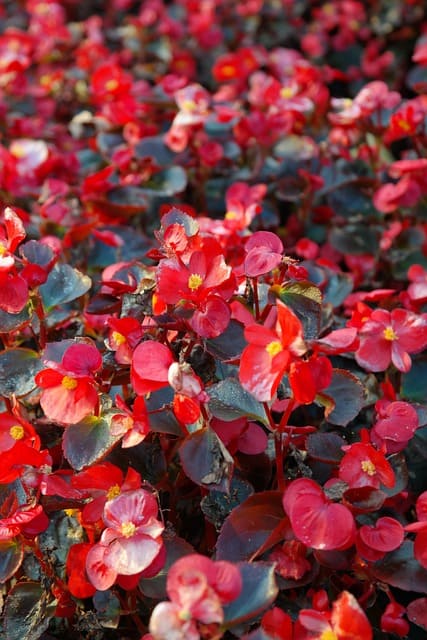
Begonias are beloved for their vibrant leaves and flowers, providing a rich assortment of textures and colors. Both the fibrous-rooted and tuberous types bloom prolifically, often featuring lush foliage that enhances their floral displays. With their adaptability to various light conditions, begonias are perfect for shadier areas or even part-sun spots.
They thrive in well-drained, moisture-retentive soil, appreciating consistent watering and humidity. Regular deadheading promotes prolonged blooming. Begonias are perfect for container gardening, as their colorful foliage looks good even when flowers fade, making them a great choice for adding year-round appeal.
Angelonia (Summer Snapdragon)
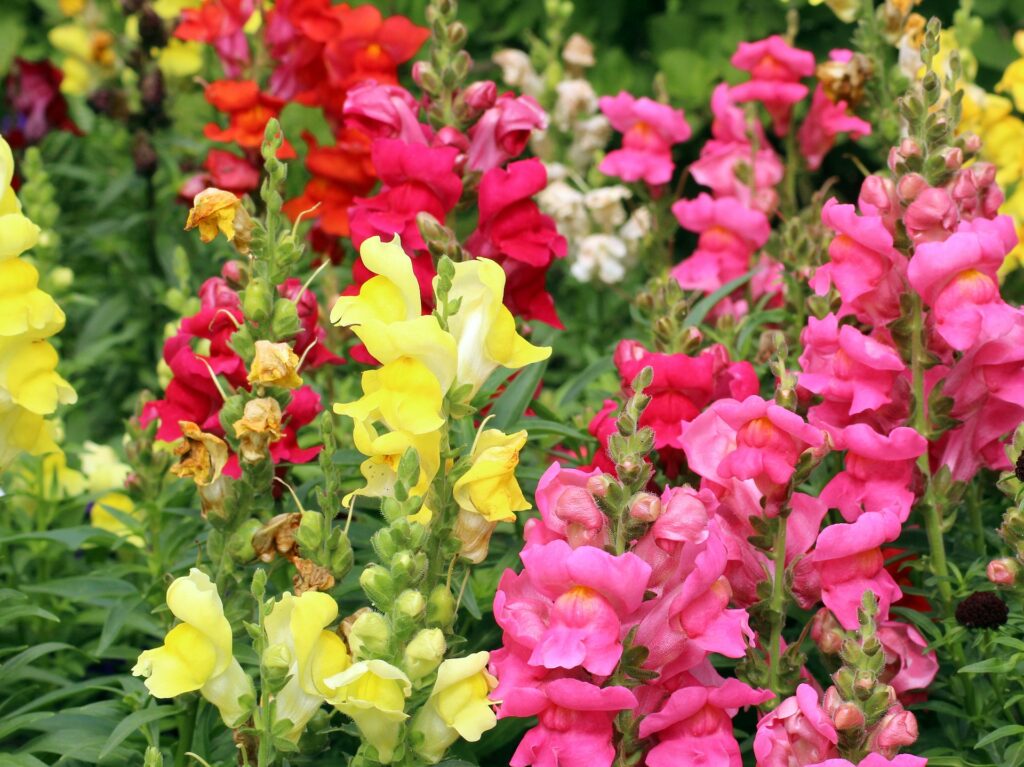
Angelonia, often called summer snapdragon, is a stunning annual flower that stands out for its tall spikes and abundance of blooms. Available in shades of purple, pink, and white, angelonia thrives in heat, making it an excellent choice for the UK summers.
Angelonia prefers full sun and well-drained soil, and once established, it requires minimal care. Its drought tolerance is a bonus for busy gardeners or those seeking low-maintenance options. With its showy flowers, angelonia can be used as a border plant, in containers, or in mixed perennial gardens, providing vertical interest and vibrant coloring throughout summer.
Cosmos

Cosmos is a wonderful annual flower known for its daisy-like blooms and ability to flower profusely throughout the summer months. These plants come in shades of pink, white, and orange and are known for their feathery foliage, which gives a unique texture to gardens.
Cosmos thrives in well-drained soil and full sun but can tolerate poor soil conditions. They’re relatively drought-tolerant, making them a low-maintenance choice. Cosmos are lovely in informal gardens or wildflower settings, attracting butterflies and beneficial insects. Not only are they beautiful, but they also make excellent cut flowers, bringing the beauty of the garden indoors.
Geranium

Annual geraniums (Pelargonium) offer vibrant blooms and aromatic foliage, making them a fantastic addition to gardens and containers alike. Available in numerous colors, these flowers can bring life to any corner of your outdoor space, thriving as perennials in warmer parts but typically grown as annuals in the UK.
Geraniums perform best in full sun and well-drained soil. Regular deadheading will encourage continuous flowering, while consistent watering will keep the plants healthy. Geraniums are also known for their pest-repelling qualities, making them excellent companions for other plants. With their bright blooms and pleasing scent, geraniums are a gardener’s favorite.
Marigold
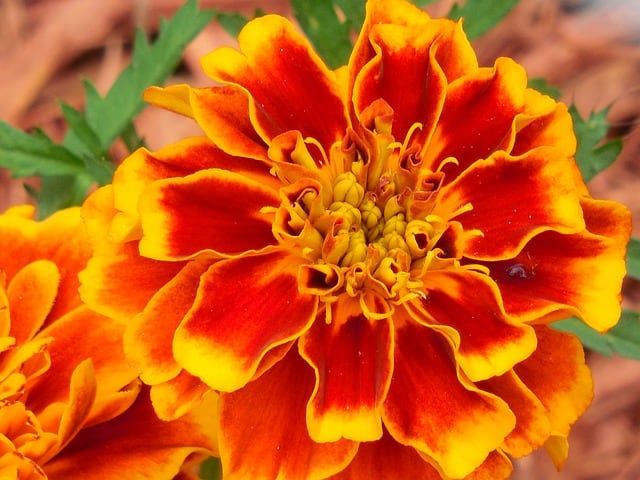
Marigolds (Tagetes) are beloved for their cheerful, sunny blooms and their ability to deter pests, making them ideal for companion planting. With rich gold and orange hues, marigolds brighten any garden, thriving even amidst neglect and poor soil conditions.
These flowers flourish in full sun and well-drained soil. They are drought-tolerant once established, requiring few resources. Regular removal of spent blooms encourages continuous flowering. Marigolds attract beneficial insects while repelling nematodes and certain pests, making them a strategic choice for any gardener looking to create a thriving ecosystem.
Snapdragon
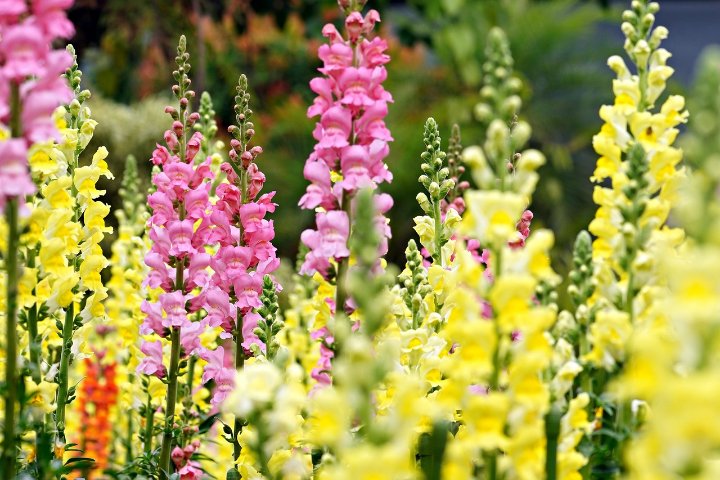
Snapdragons (Antirrhinum majus) are charming annual flowers characterized by their unique ‘dragon’ blooms, which open and close when pinched. These flowers come in a wide range of colors and heights, making them perfect for arrangements, borders, or containers.
Snapdragons prefer full sun and well-drained, fertile soil. They appreciate regular watering, especially during dry spells. Deadheading spent flowers will encourage additional blooms, and they make wonderful cut flowers, bringing vibrant colors into your home. The charming shapes and vibrant colors of snapdragons add joy and artistry to the garden, inviting curiosity and delight.
Sunflowers

Sunflowers (Helianthus annuus) are undoubtedly a garden favorite, known for their iconic large yellow blooms that follow the sun’s path across the sky. They bring a whimsical touch to gardens, making them perfect for both themed gardens and mixed borders.
Sunflowers thrive in full sun, enjoying a range of soil types, provided they are well-drained. Water deeply during dry spells, particularly during the planting stage, to encourage strong growth. With their height and radiance, sunflowers serve as excellent backdrops to shorter plants. They also attract pollinators and beneficial insects, contributing to a healthy garden ecosystem. Their seeds can be a delicious snack—and an attractive source of food for numerous garden birds!
Dahlia
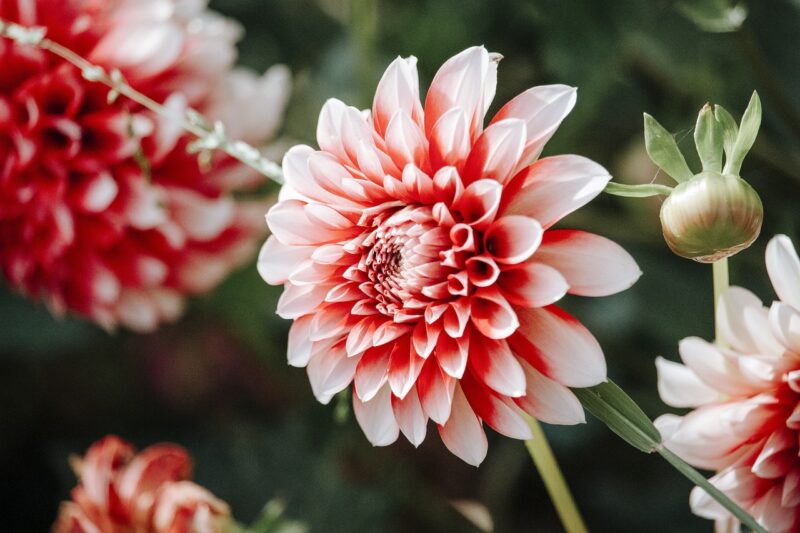
Dahlias are stunning annuals known for their variety of shapes and colors, ranging from simple pom-poms to intricate floral forms. Suited to the UK’s climate, dahlias add drama and richness to gardens, blooming well into autumn if tended properly.
Dahlias prefer full sun and nutrient-rich, well-drained soil, with regular watering to keep their blooms healthy. They benefit from deadheading spent flowers, leading to an extended blooming season. Ideal for mixed flower beds, dahlias are perfect for both structured and informal gardens. Their blooms make exquisite cut flowers, often serving as the centerpiece in summer floral arrangements.
Chrysanthemum

Although often considered a perennial, many varieties of chrysanthemums (Chrysanthemum morifolium) can be grown as annuals in the UK. Known for their lush blooms, chrysanthemums come in various colors and forms, making them a versatile choice for both gardeners and florists.
Chrysanthemums thrive in full sun and well-drained soil. Their watering needs increase during flowering, but once established, they require moderate care. Regular pinching back can promote bushier growth and more blooms. With their striking colors and rich forms, chrysanthemums can transform gardens into vibrant late-summer spectacles and are excellent for arrangements, bringing the beauty of autumn indoors.
Pansies
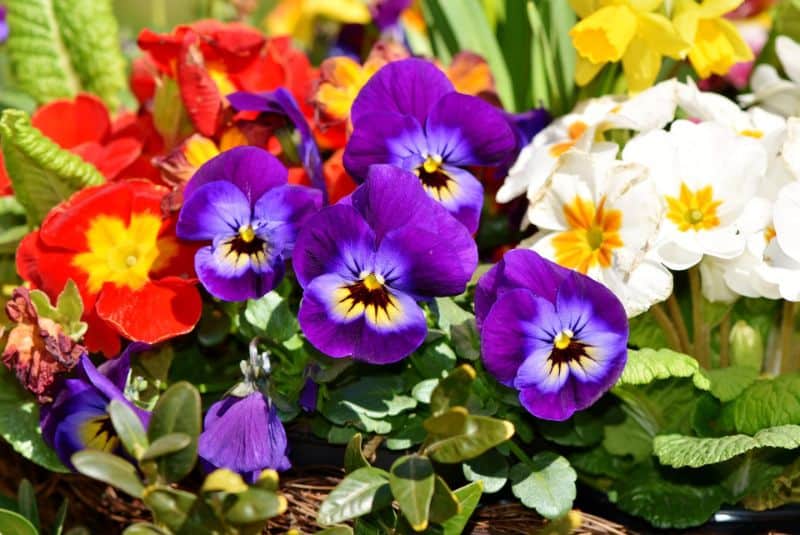
Pansies (Viola tricolor var. hortensis) are a beloved annual flower in the UK, known for their charming faces and wide range of colors. These cool-season flowers are perfect for adding a splash of color in the early spring and fall, making them exceptionally versatile.
Pansies thrive in well-draining soil and partial to full sun, appreciating cooler temperatures. Regular deadheading will promote blooming, and adequate watering is essential during dry spells. Their vibrant colors and unique shapes bring joy to gardens, window boxes, and containers. As a bonus, pansies can also be used as edible flowers, adding beautiful garnishes to salads or cakes.



